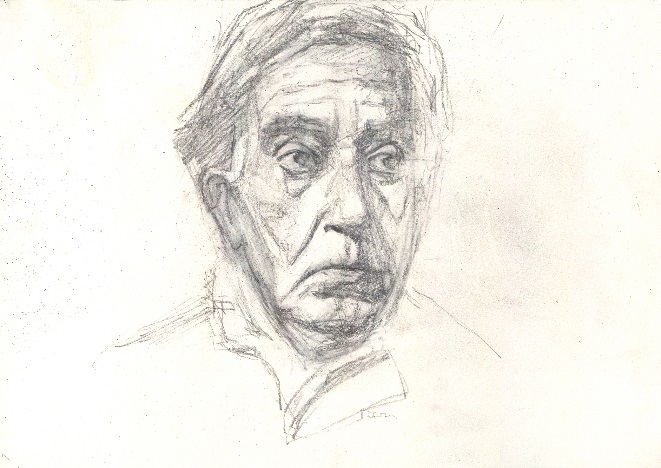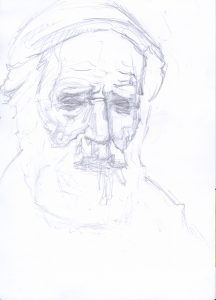Aerialistic Piano Trio, this piece represented Greece to the “MINSTREL cultural event 2007-2013” and has been performed by the “Trio Zagreb” in Vienna on December 2012. The piece represented Greece in this European project after national competition.
It takes four, for string quartet. This piece was commissioned to accompany an international conference in memory of the highly acclaimed musicologist Raymond Monelle (Oct 2012). Performed by the Edinburgh Quartet.
The Apotheosis of Sisyphus, a piece for narrator and orchestra. It has been performed by the Edinburgh University Chamber Orchestra on March 2012. The piece won the orchestra’s composition competition held at that year.
Aerialistic Movement V, for piano quintet. This was a result of an exchange programme of the composition classes of the Conservatorio di Santa Cecilia and the University of Edinburgh. The “Seiras Ensemble” performed the piece in two concerts, one in the famous Sala Accademica of St Cecilia in Rome (March 2011), and in Edinburgh (May 2011). The group effort of the 14 composers and the performers have received recognition from both the British Council in Rome and the Istituto Italiano di Cultura in Edinburgh, Scotland.
Four Italian Songs, for voice and chamber ensemble. The texts are from Francesco Petrarca’s “Il Canzoniere”. Initially, these songs [no 12, 100, 106, and 215 of the collection] were written to accompany an art exhibition by the artist Lady Lucinda Mackay in Randolph Gallery, Edinburgh, 2007. The first song “Se la mia vita” has been broadcasted live from BBC3 on Oct 2009 from the programme “Hear and Now”. It was played by the Edinburgh Quartet and sung by the soprano Loré Lixenberg. In addition, the song Se la mia vita for voice and quartet has been recorded and included in a CD which has been the result of collaboration of composers based in Edinburgh. This international project includes composers from 9 countries, who had decided to begin their musical careers in Scotland. The performers of the CD include the Edinburgh Quartet and soloists Loré Lixenberg (soprano) and Andrew Johnston (piano). Also the score of this work published by Europa Edition.
Subito and The Completed Parthenon on Calton Hill, two Orchestral songs on poetry by Vassiliki Rapti and Ron Butlin (Edinburgh Makar) performed by Edinburgh Contemporary Music Ensemble in November 2015. Subito has been selected by the Greek Composers Union as a shortlisted composition to represent Greece to the ISCM, Beijing 2018 (International Society of Contemporary Music)
The Cavafy Cycle is a work for soloists, mixed choir, and symphonic orchestra based on twenty-seven poems in Greek and English language by the eminent poet of the Greek diaspora, Constantine P. Cavafy (1863-1933).

The setting of Cavafy’s poems to music started almost 24 year ago (1994) when, as a young music student I tried to combine words and music into songs. Some of these first attempts were eventually discarded, but others slowly transformed into something new, including a couple of Cavafy’s poems in Greek as well as in English translation (1995).
Soon after I started my studies in Edinburgh University (2001), the constantly transformed Cavafy Cycle began to expand with new songs in English which were performed in various concerts at the university.
A few years later, while I was working on my masters in Royal Holloway (2005), a number of newly written songs started to crystallise the cycle into its current form. A version for voice, piano, flute, and tape were performed in an art gallery in Athens, and also at a theatre in the city of Larissa. Another short version for piano and voice were performed in Edinburgh in 2006. In the summer of 2012, I completed Cavafy Cycle as the main work of my thesis.
For this work, 18 poems in Greek and 9 in English have been used in order to form a twenty-song Cycle of total duration 90’. There are songs where both the two languages can be heard (“To sensual Pleasure“, “Things Ended“), and other songs (“I’ve brought to Art“, “Understanding“) where there is a choice of Greek or English vocal line. The English translation is by Edmund Keeley and Philip Sherrard (Princeton Press).
I was fortunate enough to have one song of the cycle (When they come alive) arranged for soprano and piano performed to a series of concerts of Cavafy songs by Greek, American, German, and British composers. The “Program for Recital of Songs and Reflections” has been organised by Alexandra Gravas voice, Pantelis Polychronidis piano, and Vassilis Lambropoulos speaker, (Cavafy Chair, Michigan University). Concerts took place at the University of Michigan, Iowa, Indiana, Columbia, Brown, Yale; also later, at the Hellenic Centre in London. Audio samples of this work accompanied an event hosted by the Department of the Classics, Harvard University (Program of Modern Greek Studies), May 2013.
Cavafy Cycle has been a subject of doctoral research and a dedicated chapter on a PhD thesis by musicologist Dr Andreas Triantafyllou on poetry and music. The whole thesis includes the composers: D. Mitropoulos, J. Tavener, L. Harrison, N. Rorem, K. Rekleitis, and P. Schat. https://www.era.lib.ed.ac.uk/handle/1842/18021
 Τhe sculptor, Hommage à Yiannoulis Halepas
Τhe sculptor, Hommage à Yiannoulis Halepas
for piano and symphony orchestra, dur. ~30′
This work was inspired by the life and work of the sculptor Yiannoulis Halepas. He was born in 1851 in the island of Tinos, Greece, and died in Athens in 1938. From an early age he had shown an interest in sculpture and even though his family was from a sculpting tradition, Yiannoulis had to overcome his family’s objections to follow the art. When he was 18 he moved to Athens where he finished the Polytechnic in half the customary time and with the highest marks. In 1873, he went to Munich to attend the Academy of Fine Arts and he also completed his studies there in record time, partially due to the withdrawal of his scholarship. When he returned to Athens he started to work intensely and productively and he completed among other works, two of his most popular sculptures (“Satyr and Eros” and “the Sleeping Girl”) in which he combined neoclassical tradition with realism.
At the age of 28, mental problems were beginning to plague him, and he started to exhibit signs of depression and strain. Halepas and his family returned to Tinos where he spent an empty period of ten years, during which the only artistic work he made was sketches (which he destroyed shortly after). On July 11, 1888, Halepas was put in the state psychiatric clinic in Corfu. He stayed there for 14 years and then he went back to his home in Tinos one year after his father’s death. His output during those years was non-existent. From 1902, at the age of 51, he lived with his mother whose overprotectiveness prevented him from any artistic endeavours.
Halepas’ “rebirth” began in 1918 (two years after his mother’s death) and the creative energy lasted until 1930. Marble was replaced by clay, and his work was exhibited in Athens receiving awards and honours. However, Yiannoulis Halepas continued his ascetic life in Tinos. The sculptor lived his last years (1930-1938) in Athens with his niece who offered him an environment of warmth and affection which allowed him to devote himself totally to art. An art completely different from his contemporaries, which is not surprising considering he lived almost 40 years in psychological and artistic isolation.
This piece of music has been written in such a way as to attempt to mirror the sculptor’s life, a tragedy in three acts. The structure is of a three-part concerto follows the oscillations of the sculptor’s creative and personal life: a vigorous first section, a slow middle part, and a content ending— in a way of catharsis.